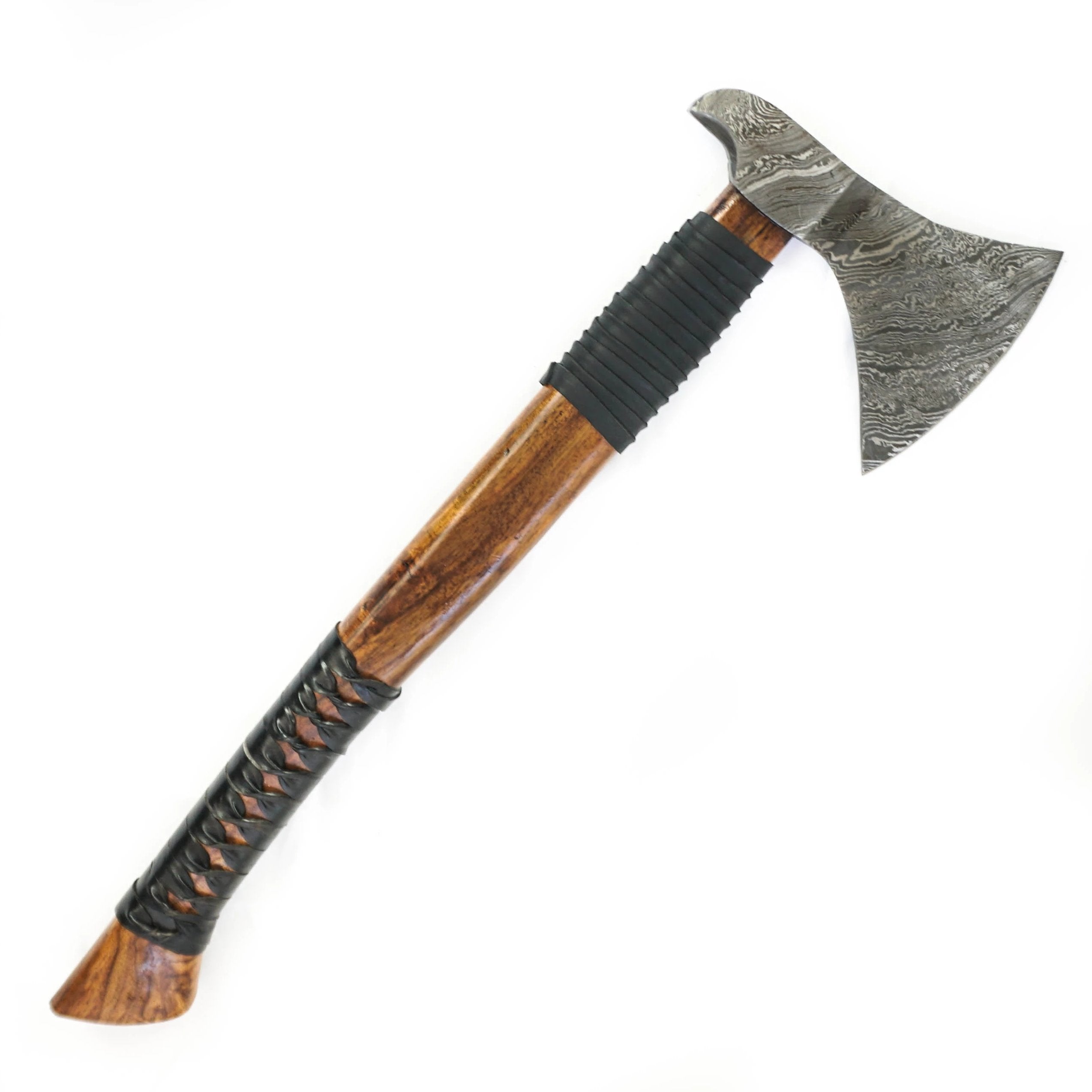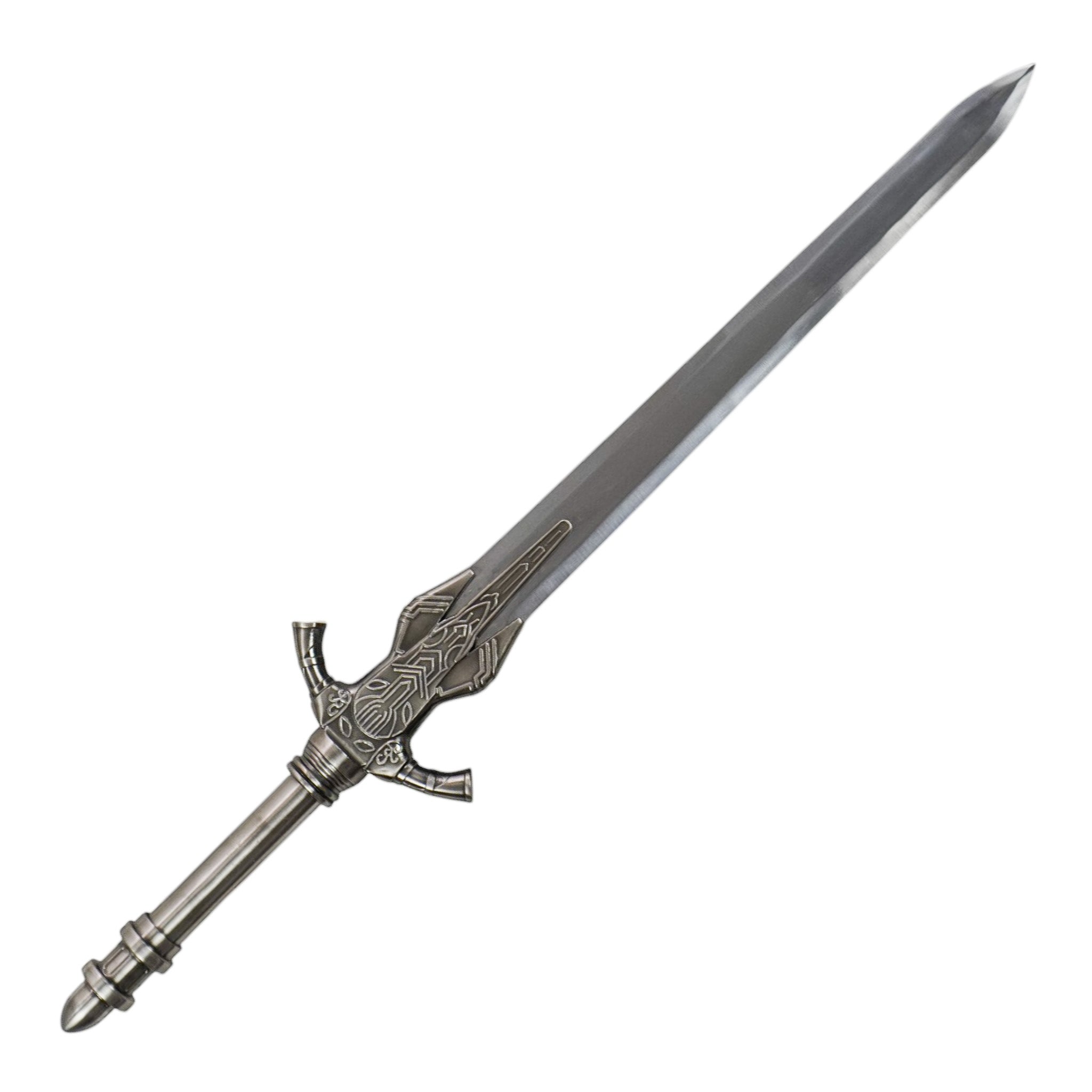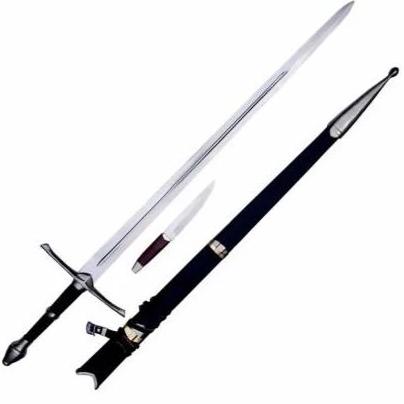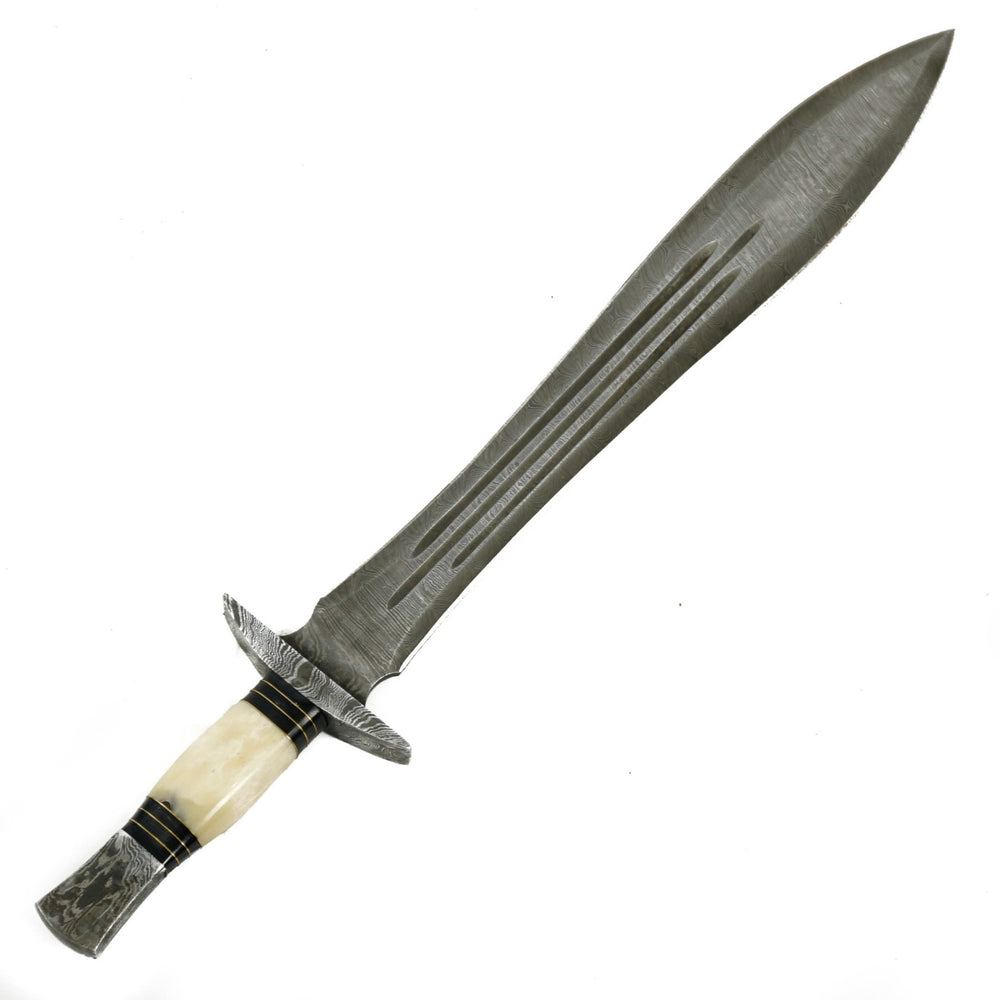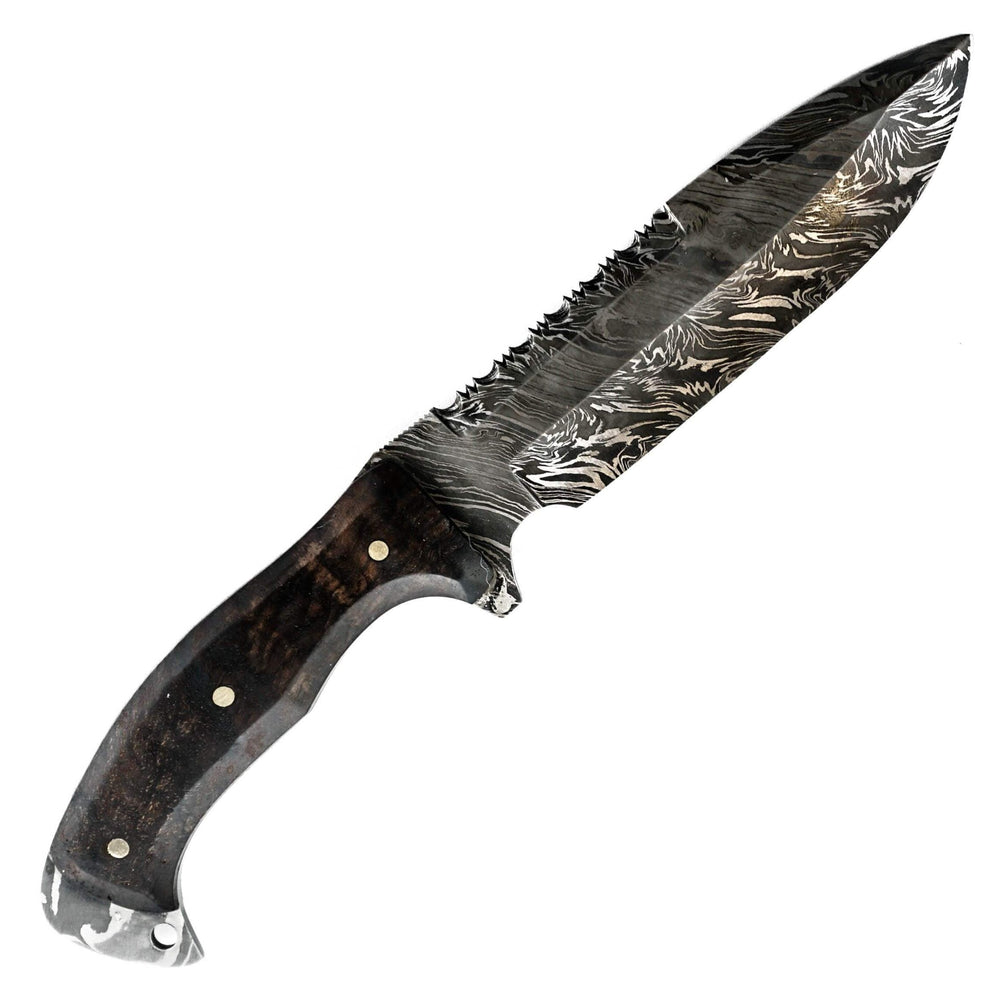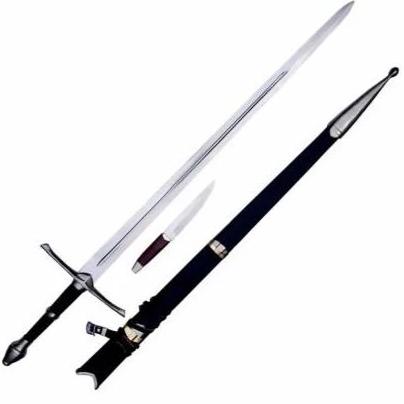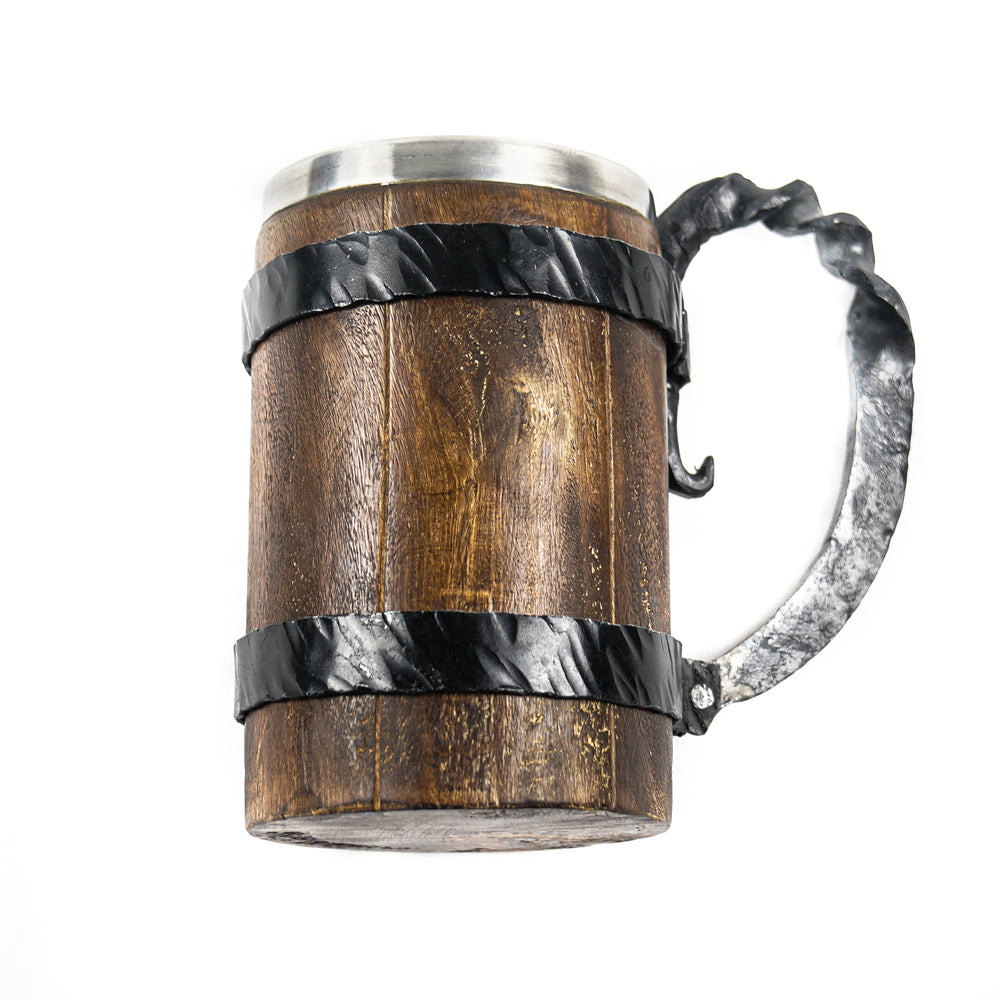Rapier vs. Longsword: A Comparative Analysis of Two Iconic Blades
The rapier and longsword are two of history's deadliest and most iconic weapons. With their distinctive designs and rich historical context, these blades have captured the imaginations of warriors, historians, and enthusiasts alike.
The Rapier vs. Longsword has been a debatable matter for a long time. Therefore, understanding the rapier and longsword allows us to explore the evolution of weaponry throughout different eras.
The Rapier, characterized by its slender blade and intricate hilt, gained popularity during the Renaissance. At the same time, the longsword, with its versatile design and longer reach, was prominent during the Middle Ages.
By examining Rapier vs. Longsword side by side, we can appreciate the advancements in combat techniques, armor, and craftsmanship over time.
Furthermore, studying the Rapier vs. Longsword comparison provides insight into the cultures and societies that wielded them.
After all, these weapons were not merely tools for self-defense or warfare; they were symbols of status, skill, and honor. Hence, analyzing their usage in various historical contexts sheds light on the values, traditions, and social dynamics of the past.
This article aims to compare and contrast Rapier vs. Longsword, exploring their similarities and differences in design, functionality, and usage. We will examine their respective advantages and disadvantages in combat, as well as the techniques and strategies employed by practitioners.
By studying the comparison Rapier vs. Longsword, we can enhance our knowledge of historical weaponry, all the while gaining insights into past cultures.
Historical Context - Comparing Rapier Vs. Longsword
History Of Rapier
The Rapier emerged as a prominent weapon in Europe. Its design was influenced by the cultural and societal changes taking place at the time.
As society shifted towards a more civilized and refined outlook, the Rapier reflected these changes with its slender and elegant appearance.
The influence of fencing schools and masters further contributed to developing Rapier techniques and combat styles.
Here at Battling Blades, we have a diverse collection of rapier swords available.
History Of Longsword
The longsword underwent significant changes during the transition to the Renaissance period. As warfare evolved, so did the longsword's design and usage.
Changes in armor, such as the introduction of plate armor, led to modifications in combat techniques. The longsword adapted to these changes by incorporating features like a longer blade and two-handed grip, enabling greater power on the battlefield.
It became the weapon of choice for knights and warriors, allowing them to strike powerful blows and deliver devastating thrusts.
Here at Battling Blades, we have a wide variety of such longswords available.
The historical context surrounding the Rapier vs. Sword comparison provides valuable insights into their evolution and development. The creation of the rapier during the Renaissance reflects the societal and cultural changes of the era.
At the same time, the longsword's evolution from the medieval era to Renaissance showcases its adaptation to changing combat techniques and armor.
Differences In Design And Construction

Crafting A Rapier
The Rapier is a complex weapon with distinct anatomy and components. It typically consists of a slender and tapered blade, a protective handguard known as the hilt, and a grip for holding the weapon.
Now, if you’re wondering “do rapiers have an edge?,” we have the answer for you.
Yes, they do have an edge characterized by their narrow profile, allowing quick and precise thrusting techniques. Moreover, the hilt protects the wielder's hand, often featuring a swept or cupped guard and a knuckle bow.
Besides, variations in rapier designs can be seen across different regions and periods. For example, Spanish swords are known for their complex and intricate hilts, while Italian rapiers often feature larger handguards.
Making Of A Longsword
The Longsword, or the "hand-and-a-half" sword, has a unique design and construction. It consists of a straight, double-edged blade, a crossguard to protect the hand, and a pommel at the base for balance.
The Longsword blade typically features a central fuller or groove to reduce weight without compromising strength.
The crossguard protects while allowing versatile hand placement during combat. Moreover, the pommel serves to counterbalance the weight of the blade.
Besides, similar to Rapiers, the construction of longswords varies based on region and period. For instance, German Longswords often have broader blades and simpler crossguards than their Italian counterparts.
Comparing The Combat Techniques And Styles
Techniques Surrounding A Rapier
Rapier combat techniques primarily revolve around thrusting, utilizing the weapon's narrow blade to deliver precise attacks.
Fencers would employ techniques such as the lunge and the fleche to close the distance and strike their opponents.
In addition, Rapiers are well-suited for parrying and counter attacking. The fencers employ various defensive techniques like beats and binding to deflect incoming attacks while simultaneously launching offensive maneuvers.
In fact, historical treatises and fencing manuals provide valuable insights into the techniques and styles employed by rapier fencers. These may include Ridolfo Capo Ferro's "Gran Simulacro dell'Arte e dell'Uso della Scherma" and Joachim Meyer's "Gründtliche Beschreibung der Kunst des Fechtens,"
Combating Styles For Longsword
Longsword combat techniques encompass cutting and thrusting techniques, allowing for versatile and powerful attacks. Fencers utilize the full length of the weapon to deliver sweeping cuts and quick thrusts, taking advantage of the sword's double-edged blade.
Besides, leverage and body mechanics play a crucial role in longsword techniques. The fencers use techniques like winding and binding to control their opponent's weapon and create openings for attacks.
Influential martial arts manuscripts provide detailed instructions on various longsword techniques and the principles underlying their execution. These include Fiore dei Liberi's "Flos Duellatorum" and Johannes Liechtenauer's "Zettel.”
Rapier Vs. Longsword: Advantages And Disadvantages
To settle the Rapier vs. Longsword debate, we need to look at the advantages and disadvantages of each sword.
Rapier Advantages
Rapiers offer several advantages in dueling and civilian self-defense scenarios. The weapon's focus on thrusting techniques allows for precise attacks, making it effective in one-on-one engagements where accuracy is crucial.
Rapiers also provide good reach, enabling fencers to strike from a distance and maintain a safe zone.
Rapier Disadvantages
Rapiers come with limitations in battlefield scenarios. Their narrow blades are less effective for cutting or slashing, which can disadvantage them in close-quarters combat or against armored opponents.
Additionally, the slim design of the rapier blade makes it more prone to breaking or bending under heavy impact, posing vulnerabilities to the user.
Longsword Advantages
The Longsword boasts versatility in both one-on-one combat and group engagements. Its cutting and thrusting techniques allow for a wide range of attacks, making it adaptable to different situations.
The Longsword's reach and maneuverability provide an advantage in a one-on-one duel. Its broad blade can strike multiple opponents simultaneously in group engagements.
Longsword Disadvantages
The Longsword presents challenges in close quarters where its length can be a hindrance. Specialized weapons designed for certain types of armor, such as poleaxes or maces, can also pose difficulties for Longsword users.
Furthermore, effective use of the Longsword requires strength and stamina, as the weapon's weight and the physical demands of wielding it can tax the user.
All in all, to answer the question, “are Rapiers good weapons or Longswords?,” let us make it simpler for you.
Rapiers excel in dueling and civilian self-defense but have limitations in battlefield scenarios and vulnerabilities due to their blade design.
In contrast, Longswords offer versatility in various combat situations but face challenges in close quarters against specialized weapons. Therefore, they place importance on the user's strength and stamina.
Hence, understanding these advantages and disadvantages enhances our knowledge of these weapons' historical context and effectiveness.
Cultural And Symbolic Significance Of The Two Weapons
The Rapier holds significant cultural and symbolic value, particularly nobility and refinement. Throughout history, the Rapier has been associated with the upper class, symbolizing wealth, status, and sophistication.
Its elegant design and slender blade reflect the ideals of grace and precision. In fact, carrying a rapier was a mark of social standing and a fashion statement in many societies. The ornate hilt and intricate details of the sword spoke volumes about the owner's taste and style.
On the other hand, the longsword carries its own cultural and symbolic significance, rooted in medieval art and literature. Depicted in countless paintings and described in epic tales, the longsword became a symbol of strength, honor, and bravery.
It represented the ideals of chivalry and knighthood, embodying the virtues of loyalty, courage, and justice. In medieval society, a longsword signified a knight's status and prowess on the battlefield.
In particular, Rapier and Longsword illustrate how weapons can transcend their practical function to become powerful symbols within a culture.
Whether through associations with nobility and refinement or depictions of chivalry and knighthood, these weapons have left an indelible mark on history. Thus, they reflect the values and aspirations of the societies that revered them.
Legacy And Modern Influence
The legacy and modern influence of the Rapier and Longsword are undeniable. The Rapier, a slender and elegant weapon, has left a lasting impact on modern sport fencing.
Its precise techniques, agile movements, and emphasis on finesse have greatly influenced the development of modern fencing disciplines. Its influence can be seen in thrusting techniques and the focus on quick, strategic maneuvers.
Beyond sports fencing, the Rapier has also found popularity in historical reenactments and stage combat. Enthusiasts and performers embrace the Rapier's historical significance and incorporate its techniques into their displays and performances.
All in all, the combination of historical accuracy and the Rapier's inherent grace make it a captivating weapon to watch in action.
Similarly, the longsword has experienced a revival in modern and historical European martial arts (HEMA). Dedicated practitioners have taught longsword techniques and training methods, allowing for a deeper understanding and appreciation of this formidable weapon.
The resurgence of HEMA has provided a platform for enthusiasts to study and practice the longsword, keeping its legacy alive. Its appearance in various forms of entertainment has further solidified its status as a legendary weapon.
In addition to its martial applications, the longsword has also played a significant role in popular culture and media. From epic fantasy novels to blockbuster movies, the longsword has become an iconic symbol of strength, honor, and heroism.
The Rapier vs. Longsword debate continues to captivate and inspire individuals today. Their influence can be seen in modern sport fencing techniques, historical reenactments, martial arts practices, and popular culture.
These weapons testify to historical weaponry's enduring power and fascination.
Conclusion
In the ongoing discourse of "Rapier vs. Longsword," it becomes evident that they have left an indelible mark in martial history. Both embody the essence of their respective eras and offer unique insights into the evolution of combat techniques and the cultures they originated from.
The Rapier's elegance and finesse, coupled with its speed, precision, and agile footwork, make it a quintessential emblem of the Renaissance period. Conversely, the Longsword's robustness, versatility, and emphasis on power exemplify the pragmatic approaches to combat that defined the medieval epoch.
Ultimately, the preference for one over the other often hinges on individual inclinations, combat strategies, and historical contexts. The Rapier's flourish and the Longsword's heft have their proponents, illustrating the approaches that martial practitioners have explored throughout time.
Modern enthusiasts and practitioners continue to glean inspiration from these tools of the past, enriching their understanding of these weapons
In closing, we invite you further to explore these iconic blades' rich history and techniques. Whether you are interested in the rapier's precision and finesse or the longsword's power and elegance, there is much to discover and appreciate.
Embrace the opportunity to delve into the world of historical weaponry and uncover the secrets and beauty of these timeless weapons.
If you’re already fascinated by these ancient artifacts, head on to Battling Blades and get your hands on the best Rapier and Longsword collection today.

